”Hub or SChAB? An exhibition which will not happen”
this project took place in the frame of the Mediations Biennale 2010 in Poznań, Arsenal Gallery, Poznań, Poland 2010.
Idea & curator: Mariusz Sołtysik
Artists:
Agnieszka Chojnacka (PL)
Christine Mackey (IRL)
Ela Walters (PL)
Wiktor Polak (PL)
Mariusz Soltysik (PL)
Dmitry Strakovsky (USA)
What is HUB or SChAB? One would need to explain the words that make up the title. More about that in a moment.
The exhibition I wanted to initiate originally, rested on the assumption that art is a document of its times, while the artist is a social element. I wished to create a platform for discussion between artists. Time, and reality above all, put the recorded words to the test, and the project acquired the shape (formal one) in which it will be presented in September. A compromise? No. Simply, just as most members of our species I bade farewell to what I envisaged, while the actual picture, frequently at variance with the presumed, is as it is. The experience it will elicit is hard to foresee, because at the time this text is being written, I do not know the final outcome (in its substance). Here, I reenter the realm of assumptions. The contemporary struggle for the audience and event creation have a similar formula: the catchphrase – proposed by the curator, and works of artists, matched by him, or picked in such a way that they fit the concept or the venue.
An artist told me recently about a curator, who, on inviting her to participate, suggested the expected content in advance. This is a safe solution, and in this fashion the artist (culture) may be managed “freely”, complying with the tenets of the of the system in force (here, I refer the reader to Guy Debord and the concept of the CamouFlash exhibition, which I have had the pleasure to co-organise). The form of this exhibition, to be moulded by the artists is – one could say – destined for viewers with strong imagination. One of the great creators of the 20th century wrote the following about his book:
“My books »Concerning the spiritual in art« and »Der Blaue Reiter« aimed to awake in a person the ability to see the spiritual in things both material and abstract, since this makes us greatly happy, incredibly extends and enriches our life, and remains indispensable for our future. The desire to develop such disposition in people who sadly lack it, was the main purpose of the publications. It was frequently misconstrued, and even today it is not always interpreted correctly. It was treated as a »programme«, while the authors were taken for »poor« artists, whose brains were addled by theorisation and cerebral effort. Nothing could have been more remote from my designs than appealing to intellect and comprehension. Today it would be premature; only in the next stage can artists be faced with the task, which is an important and obvious goal of the evolution of art. To a spirit well established and endowed with strength there will be no threat, including intellectual work we fear so much in art – even its superiority over intuitive »inspiration«, which perhaps will be altogether surrendered in the future”
Wasyl Kandyński (Wassily Kandynsky) 1910
Is today’s exhibition-going public really that formed, that intellectual work will not endanger the well established spirit, as Kandinsky writes? I have my doubts. However, they are not the issue, but our exhibition, in which six artists create a collective work. In turn, collective work does not mean democratic order and some overriding principle. Six different works will emerge in the same technique, and one might say that this is the only thread that links all of them. This is the platform on which the artists will speak out. Yes, speak this time, so that the viewer, gorged with ready-made multimedia imagery, “seeing the spiritual in things both material and abstract” may experience happiness and find out about the power of their imagination. Undoubtedly, apart from that capacity, it will be important to understand the language used by the artists. We will deal with the signified and the signifier, the semiotic and the abstract language of art. Since the artists use language verbally, it belongs to the same maze to which Wittgenstein refers with regard to resolving philosophical quandaries through language in his “Philosophical Investigations”:
- A philosophical problem has the form: »I don’t know my way about«.
- Philosophy must not interfere in any way with the actual use of
language, so it can in the end only describe it.
For it cannot justify it either.
It leaves everything as it is.
It also leaves mathematics as it is, and no mathematical discovery can advance it. A »leading problem of mathematical logic« is for us a problem of mathematics like any other.
The language utilised by artist remains as it is. Should the logic justifying the selection of artists in the three-to-three arrangement, i.e. three men and three women, be elucidated? The symmetrical arrangement, dictated by intuition, and therefore beyond logic remains as it is. This is not to say that the composition of the exhibition is devoid of mutual relationships. All are connected by the shared aspect of making life complicated and difficult among the ever growing number of empty and useless products of our civilisation (of welfare). The informal relationships of artists create further complication: their close acquaintanceships and unfamiliarity. There is no logic here, just as in the case of using native tongue. Two to four: English versus Polish, although two artists speak two languages simultaneously (two different ones though). Can any clarity be achieved in such circumstances? As I wrote earlier, I do not know the final outcome. The artists work separately with video. This doubtless experiment makes me rejoice, because it cannot be speculated on, cut down, shifted, or added to, so as to make something look better.
And “HUB” means a “centre”, “pivot” in English, “SChAB” – in phonetic approximation – resembles Polish word for a piece of meat, or, following the capitals – the English eschar.
I dedicate this exhibition who, upon completing business administration studies in curating and culture management may say after engineer Mamoń of “Rejs”: “I watch only those films I know well”.
It is like it is, or rather, will be.
Mariusz Sołtysik
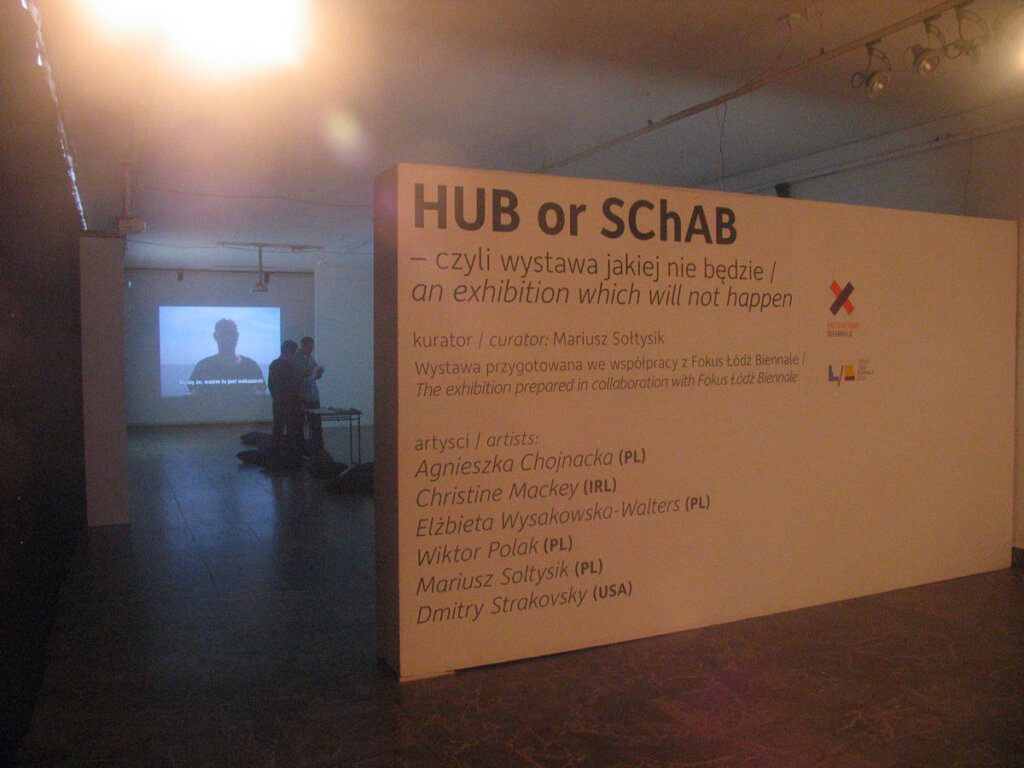
view from the exhibition in the Arsenal Gallery, 2010 
view from the exhibition in the Arsenal Gallery, 2010 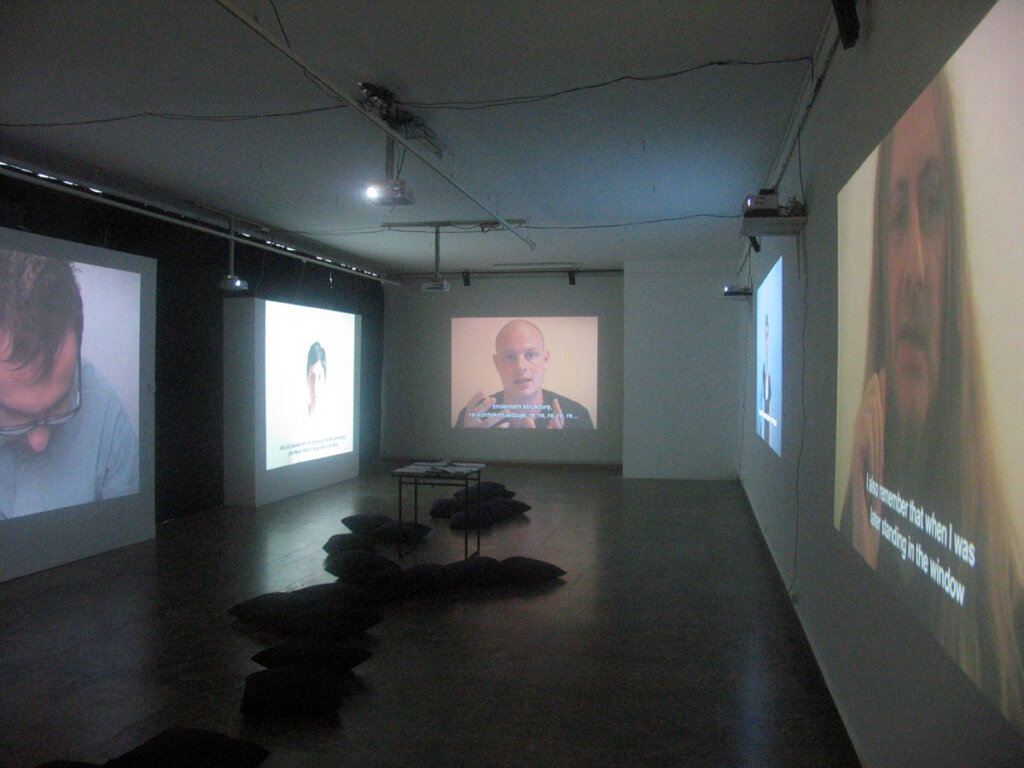
view from the exhibition in the Arsenal Gallery, 2010 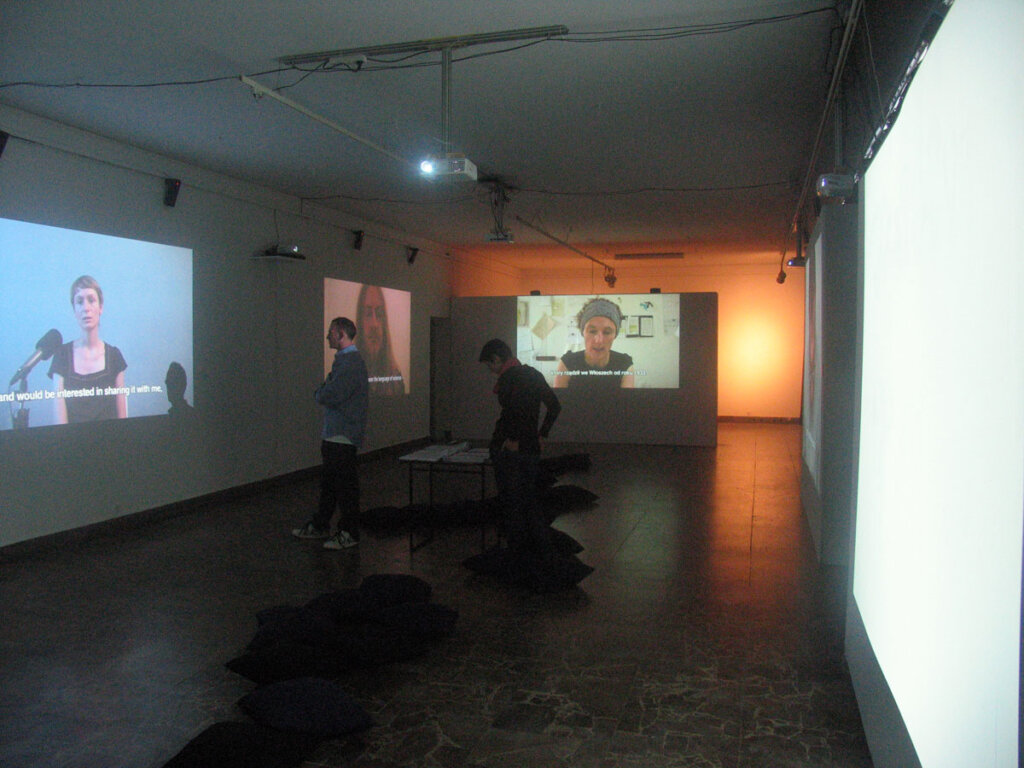
view from the exhibition in the Arsenal Gallery, 2010 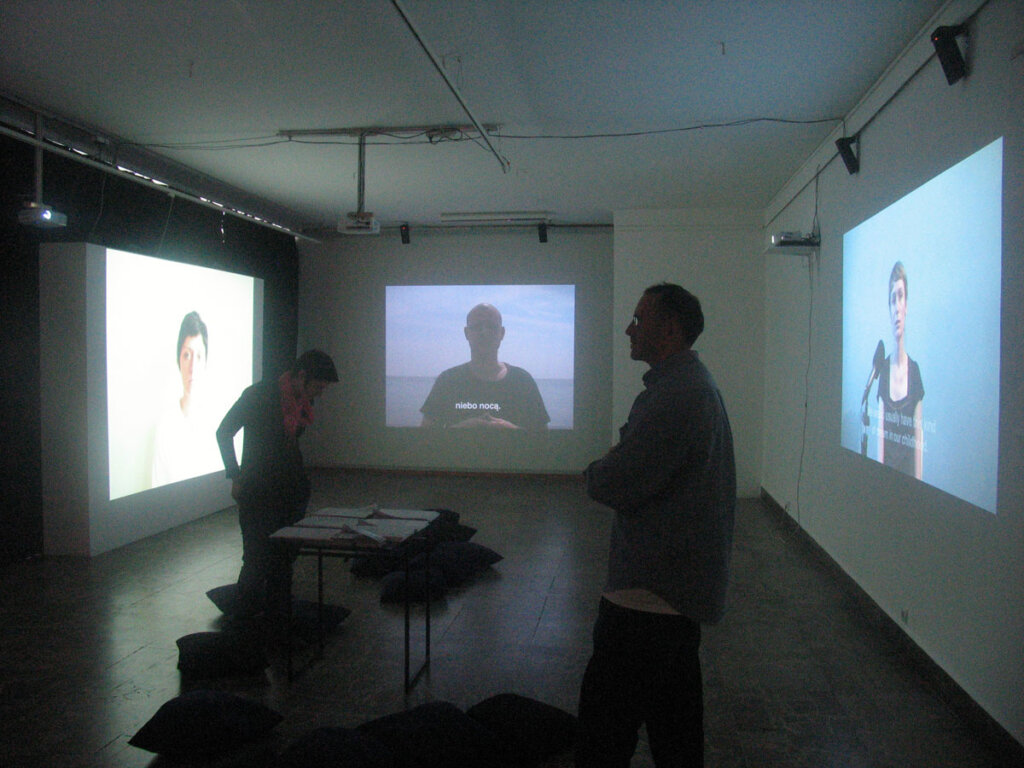
view from the exhibition in the Arsenal Gallery, 2010 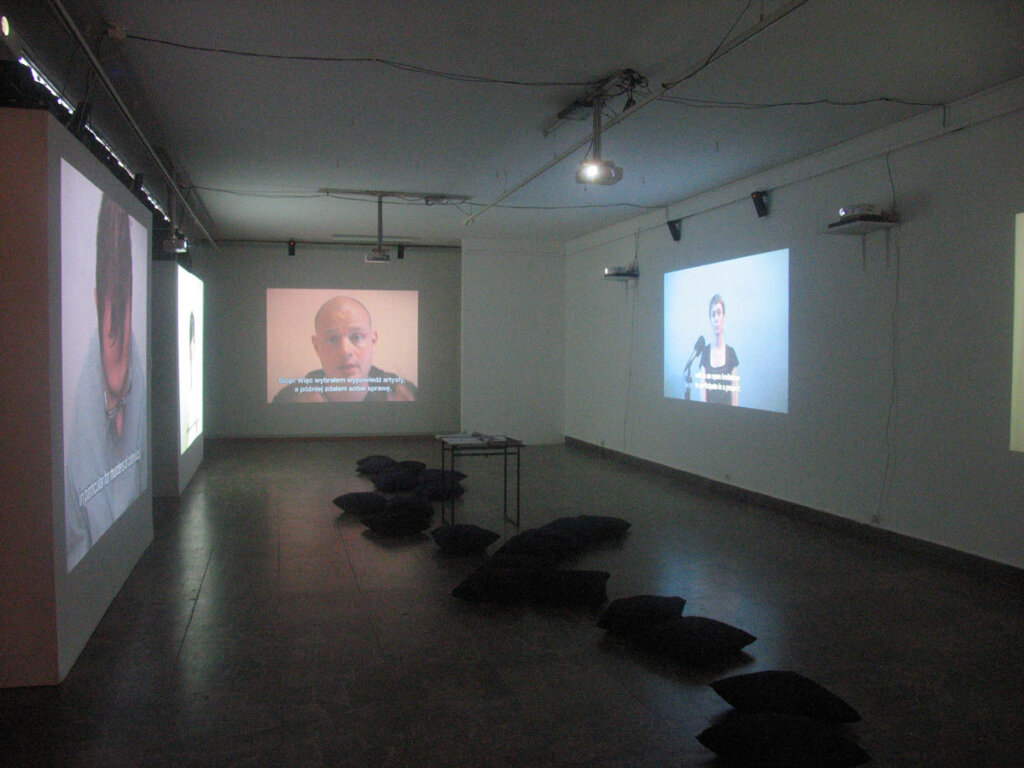
view from the exhibition in the Arsenal Gallery, 2010 
view from the exhibition in the Arsenal Gallery, 2010